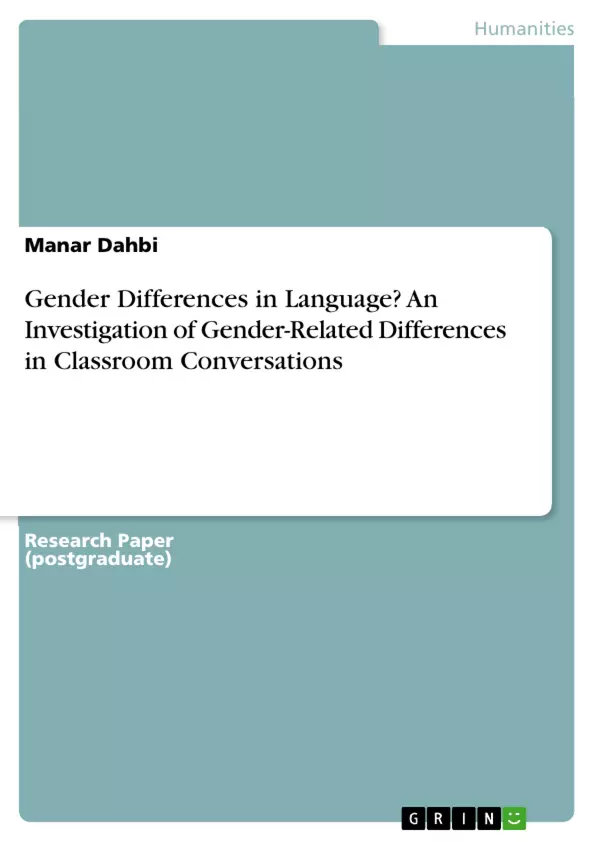Most empirically based studies of gender differences in language usage have suggested that women and men have different sets of norms for interaction. The aim of this investigation is to study some gender-related differences in both single-sex and mixed-sex classroom conversations. The assumption is that knowing the extent to which gender affects L2 learning and teaching may provide EFL teachers with insights that can help them make language learning more effective. Viewed from this perspective, it follows that gender differences may have implications for L2 teaching, learning, and assessment.
Inhaltsverzeichnis (Table of Contents)
- Introduction
- Review of the Literature
- Language and Gender: Gender Theory
- The dominance approach
- The difference approach
- The community of practice approach
- Language and Gender: Gender Theory
- The study
- Methodology of data collection and analysis
- Findings
- All-female discussion
- All-male discussion
- Mixed-gender discussion
- Implications
- Limitations
- Conclusion
Zielsetzung und Themenschwerpunkte (Objectives and Key Themes)
This book explores gender-related differences in language usage within Moroccan classrooms. The primary objective is to understand how gender influences language learning and teaching in a second language (L2) context. The study aims to provide insights for EFL teachers, highlighting how gender-specific communication patterns can enhance learning effectiveness. The key themes of the study include:- Gender differences in language usage in single-sex and mixed-sex classroom conversations
- The impact of gender on L2 learning and teaching
- The application of gender theory to understand classroom communication dynamics
- The analysis of linguistic variations between male and female students
- The relevance of research findings from other contexts to the Moroccan classroom setting
Zusammenfassung der Kapitel (Chapter Summaries)
The first chapter of this book provides a comprehensive review of existing literature on language and gender. It delves into the major theoretical approaches to understanding the relationship between language and gender, namely the dominance approach, the difference approach, and the community of practice approach. Each approach is examined in detail, highlighting its strengths, limitations, and implications for understanding gendered language practices in educational contexts. The second chapter presents the methodology used in this research, focusing on the data collection and analysis techniques employed to examine gender differences in classroom communication. The chapter includes a detailed description of the participant groups, the context of the study, and the specific methods used to observe and analyze the linguistic interactions between male and female students.Schlüsselwörter (Keywords)
This research focuses on the intersection of gender and language in the context of second language learning. It investigates gender differences in classroom communication, examining how these differences impact language teaching and learning processes. The study utilizes a variety of theoretical perspectives on language and gender, including dominance, difference, and community of practice approaches. Key terms that capture the essence of the study include gendered language, classroom communication, L2 learning, EFL teaching, and gender theory.
Excerpt out of 21 pages
- scroll top
- Quote paper
- Manar Dahbi (Author), 2003, Gender Differences in Language? An Investigation of Gender-Related Differences in Classroom Conversations, Munich, GRIN Verlag, https://www.grin.com/document/294150
Look inside the ebook



